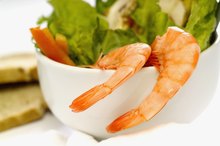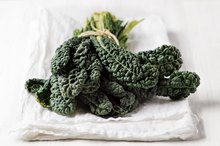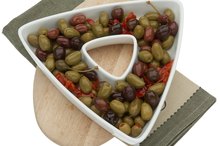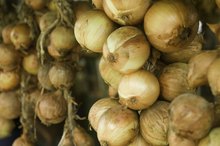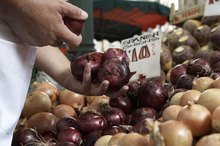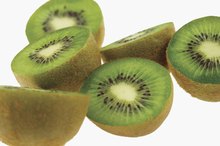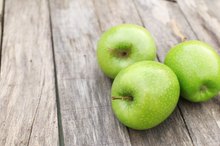What does fact checked mean?
At Healthfully, we strive to deliver objective content that is accurate and up-to-date. Our team periodically reviews articles in order to ensure content quality. The sources cited below consist of evidence from peer-reviewed journals, prominent medical organizations, academic associations, and government data.
The information contained on this site is for informational purposes only, and should not be used as a substitute for the advice of a professional health care provider. Please check with the appropriate physician regarding health questions and concerns. Although we strive to deliver accurate and up-to-date information, no guarantee to that effect is made.
Sodium Content of Fresh Tomatoes
Without sodium your nerves and muscles would not work. Sodium also regulates the amount of water in your body, which is essential for your health. When you consume too much sodium, water stays in your body and blood pressure increases. Eating plenty of fresh vegetables, including tomatoes, is a great way to reduce your sodium consumption.
Sodium in Tomatoes
One large, red, raw tomato, which equals about 1 cup of chopped fresh tomato, only has 9 milligrams of sodium. For foods to qualify as sodium-free, they must have less than 5 milligrams of sodium in one serving, according to Colorado State University Extension. While a whole tomato just misses being sodium free, one medium-sized slice of red tomato qualifies because it only contains 1 milligram of sodium. Yellow and green tomatoes have a little more, but not a significant amount. One medium slice of a green tomato has 3 milligrams of sodium, and a slice of a raw, yellow tomato has 5 milligrams.
- One large, red, raw tomato, which equals about 1 cup of chopped fresh tomato, only has 9 milligrams of sodium.
Sodium Recommendations
Natural Sodium in Shrimp
Learn More
Try keeping track of your sodium intake for a few days. If you're like most Americans, you probably get more than you realize. In September 2012, the "American Journal of Clinical Nutrition" reported that 90 percent of Americans consume more than the upper tolerable intake. The recommended daily intake for sodium is 1,500 milligrams, according to the Institute of Medicine 4. The upper tolerable intake, which is the maximum amount healthy adults should eat in one day, is 2,300 milligrams. The upper level is based on limiting the risk of high blood pressure, which means it may be lower than 2,300 milligrams if you have hypertension, diabetes or kidney disease.
- Try keeping track of your sodium intake for a few days.
- The upper level is based on limiting the risk of high blood pressure, which means it may be lower than 2,300 milligrams if you have hypertension, diabetes or kidney disease.
Other Tomato Products
If you associate tomatoes with high sodium, it’s probably due to tomato-based products, because salt is added during processing. One cup of tomato soup has 471 milligrams, while the same portion of tomato juice contains 654 milligrams of sodium. One cup of canned tomato sauce supplies almost an entire day's recommended intake. The extremely high amount of sodium you'll get from just 1 cup of different tomato products illustrates the benefit of using fresh tomatoes to make your own sauces or buying low-sodium brands.
- If you associate tomatoes with high sodium, it’s probably due to tomato-based products, because salt is added during processing.
- The extremely high amount of sodium you'll get from just 1 cup of different tomato products illustrates the benefit of using fresh tomatoes to make your own sauces or buying low-sodium brands.
Add Tomatoes to Reduce Sodium
Potassium in Kale
Learn More
The Centers for Disease Control and Prevention notes that high blood pressure is a risk factor for heart disease and stroke, which are the first and third leading causes of death in America 5. Finding ways to add tomatoes to your diet is a good way to add some filling bulk, flavor and nutrients, while also reducing sodium. Go beyond putting slices of tomato on sandwiches and in salads. Use them to replace ketchup. Add them to brown rice or make a tomato and tofu sandwich. Tomatoes, garlic and a drizzle of olive oil are great on plain, cooked pasta. Stuff whole tomatoes with a mixture of quinoa, mushrooms, onions and basil.
- The Centers for Disease Control and Prevention notes that high blood pressure is a risk factor for heart disease and stroke, which are the first and third leading causes of death in America 5.
- Tomatoes, garlic and a drizzle of olive oil are great on plain, cooked pasta.
Related Articles
References
- USDA Nutrient Database: Tomatoes, Red, Ripe, Raw, Year Round Average
- USDA Nutrient Database: Tomatoes, Yellow, Raw
- USDA Nutrient Database: Tomatoes, Green, Raw
- Centers for Disease Control and Prevention: Americans Consume Too Much Sodium (Salt)
- Linus Pauling Institute: Sodium (Chloride)
- American Heart Association. Sources of Sodium.
- Centers for Disease Control and Prevention. Top 10 Sources of Sodium. 2017.
- Institute of Medicine. Dietary Reference Intakes Tables and Application. National Academies of Sciences, Engineering, and Medicine, Health and Medicine Division. 2015.
- United States Department of Agriculture. Dietary Guidelines for Americans 2015–2020. United States Department of Health and Human Services. 2015.
Writer Bio
Sandi Busch received a Bachelor of Arts in psychology, then pursued training in nursing and nutrition. She taught families to plan and prepare special diets, worked as a therapeutic support specialist, and now writes about her favorite topics – nutrition, food, families and parenting – for hospitals and trade magazines.
